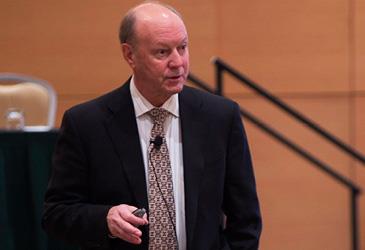Medical practices are complex, and there’s no golden rule for achieving the perfect care setting. But physicians can take certain measures to ensure their practices are prepared for evolving technology, increased patient demands and shifting payment models, Bruce Bagley, MD, told a group of physicians at the 2015 AMA Interim Meeting. Here are five things every practice will need to thrive.
Dr. Bagley said practices that wish to survive rapid changes in health care and cultivate successful transformation will take these actions:
Models that can grow with your practice
Physicians shouldn’t burden themselves trying to predict every future change that will occur in health care and then designing a fool-proof practice that somehow reflects these unpredictable changes, Dr. Bagley said. Instead, he said physicians should “develop an agile organization” around themselves, “so that as things changes—and they’re going to constantly change—[the practice] can adapt to it.”
To create a nimble practice, Dr. Bagley advises that physicians view a special organizational development module the AMA created as part of its STEPS Forward website. The site currently offers a total of 27 interactive educational modules developed by physicians to help address common practice challenges. The modules also offer continuing medical education credit. Dr. Bagley said the module shows physicians how to navigate transitions and adapt to infrastructural change.
Build a real care team
If medicine were a sport, it’d be one that revolves strictly around the team—not the star player, Dr. Bagley said. He noted that physician practices have to move away from “hero models” that rely solely on one physician and instead build teams that partner with others around defined goals and efforts. He advises practices to integrate work flows for physicians and the rest of the care team, so they are not treating patients in isolation or solely relying one person’s decisions. A STEPS Forward module can help physicians create a strong team culture in their practices.
Focus on population health
Practices that wish to reduce costs and not sink under high patient demands must take special measures to promote population health data, Dr. Bagley said. Doing so often entails “identifying the top 5 percent of your patient panel that’s costing you the most money” and designing special interventions that fit these patients’ needs. He said patient registries can help physicians identify these at-risk patients and develop evidence-based treatments. A STEPS Forward module on panel management can help.
Build physician leaders
“In the future, if we really want change to work, it’s going to have to be physician led,” Dr. Bagley said. But this doesn’t mean that every health system or practice has to have a physician CEO. Instead, “there has to be enough clinical input and physician leadership at all levels of the organization, so it remains a clinical enterprise and not just a financial one,” he said. A new leadership program from the AMA and the American Association for Physician Leadership® will be available next year to help physicians further develop these skills.
Foster physician satisfaction
A study released in 2013 by the AMA and RAND Corporation has found that being able to provide high-quality care to patients is the primary reason for job satisfaction among physicians, while obstacles—such as unusable electronic health records and administrative burdens—to doing so are a key source of stress in the profession. To avoid burnout and staff turnover, Dr. Bagley advises physicians to develop a systematic way to measure the prevalence of these obstacles in practice and create special initiatives that address them. STEPS Forward modules on preventing physician burnout and improving physician resiliency offer the steps practices need to succeed in these endeavors.




